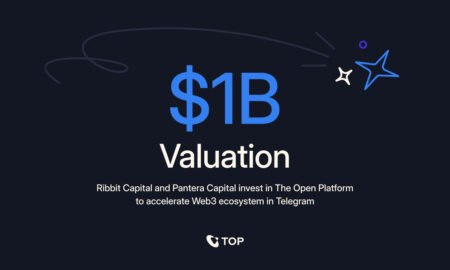How Do People Leverage Technology for Significant Personal Cost Savings?
In an age where every penny counts, knowing how to leverage technology for personal cost savings can be a game-changer. Insights from a Chief Finance Officer and a managing director reveal practical tools that can make a significant impact on your wallet. The article opens with the recommendation to use budgeting apps like YNAB and closes with the savvy tip to use price-tracking apps like Honey, covering fifteen expert opinions. Discover strategies that can transform your financial habits and boost your savings.
- Use Budgeting Apps Like YNAB
- Track Finances with PocketSmith
- Manage Subscriptions with SubscriptMe
- Utilize Groupon for Digital Coupons
- Monitor Energy Use with Nest
- Learn Online with Coursera
- Adopt Smartsheets to Cut Business Costs
- Leverage Nextdoor for Community Sharing
- Cancel Unused Subscriptions via Truebill
- Track Spending with Mint
- Reduce Recurring Expenses with Rocket Money
- Set Price Alerts with CamelCamelCamel
- Sell Unused Items with Facebook Marketplace
- Hire Affordable Help with Thumbtack
- Use Price-Tracking Apps Like Honey
Use Budgeting Apps Like YNAB
Leveraging technology for personal cost savings has become easier than ever, as various apps and tools can help individuals track spending, find deals, and automate savings. One specific technology I recommend is budgeting apps like YNAB (You Need a Budget). YNAB helps users take control of their finances by assigning each dollar a job, tracking expenses, and offering real-time insights into their spending habits.
By setting specific financial goals and keeping expenses in check, users can avoid overspending, reduce debt, and allocate more toward savings. YNAB’s ability to sync with bank accounts and provide detailed reports makes it easy to see where money is going and adjust spending accordingly. On average, YNAB users report saving $600 in their first two months and over $6,000 in their first year.
This technology not only simplifies money management but also promotes mindful spending by encouraging users to live within their means. It’s particularly useful for those looking to break the paycheck-to-paycheck cycle, build an emergency fund, or pay off debt. By utilizing budgeting tools like YNAB, people can significantly enhance their financial well-being while saving more in the long term.
Rose Jimenez, Chief Finance Officer, Culture.org
Track Finances with PocketSmith
One way people are saving money with technology is by using budgeting apps like PocketSmith. It’s a Kiwi-made tool that lets you track your income and expenses, forecast your financial future, and even plan for big purchases. It connects to your bank accounts, giving you real-time updates on where your money is going.
I’ve seen people cut costs simply by seeing patterns they wouldn’t have noticed, like how much they spend on takeaways or subscriptions. Setting financial goals within the app helps you make smarter decisions; over time, those small changes add up.
Daniel Bunn, Managing Director, Innovate
Manage Subscriptions with SubscriptMe
Many people find themselves paying for services they no longer use or even remember subscribing to. This is where subscription management tools like SubscriptMe come into play. They offer a streamlined way to track, manage, and cancel subscriptions, ensuring you get a grip on those sneaky recurring charges that can pile up over time. Tools like these provide a simple interface to view all your active subscriptions, making it easier to identify services that are unnecessary or redundant.
An effective practice is to conduct a monthly review of your subscriptions. Use SubscriptMe to list all current subscriptions and categorize them based on necessity—essential, useful, or non-essential. It’s easy to let a free trial morph into a monthly charge you don’t need, so checking in regularly can prevent small charges from adding up. Additionally, setting up alerts for when a new charge appears on your account can help you act swiftly, catching unnecessary expenses before they impact your budget.
Think of managing subscriptions as digital housekeeping. Just like cleaning your space can clear your mind, refining your subscriptions can tidy up your finances. Automating this task with a management tool saves not only money but also time. Such tools empower you to make informed decisions about your financial commitments, ultimately leading to greater control over your expenses. With less time spent worrying about unexpected charges, you can focus more on investing in things that truly add value to your life.
Jessica Bane, Director of Business Operations, GoPromotional
Utilize Groupon for Digital Coupons
One effective way individuals are cutting-down costs is through digital coupons. Apps like SnipSnap and Groupon bring savings to your fingertips, making it easier than ever to access deals on everything from groceries to dining out. These apps work by compiling a wide array of discounts and promotions, allowing users to enjoy savings without the hassle of clipping traditional paper coupons. This convenience means more people can make the most of available offers, leading to significant reductions in everyday expenses.
Navigating these platforms is straightforward. Install the app, browse for deals relevant to your preferences, and redeem them at the point-of-sale, or use codes online. The key is staying organized and planning purchases around available discounts. With notifications and timely updates, apps like Groupon ensure that you never miss an opportunity to save. This method of shopping not only offers immediate financial benefits but also encourages more strategic purchasing habits, helping users make thoughtful decisions about when and where to spend money.
For those new to digital couponing, setting a routine can amplify savings. Allocate time weekly to browse the apps and plan your purchases. Also, engage with user reviews and community tips within the app to discover less obvious deals or stack multiple offers. This approach transforms couponing from a mundane task into an engaging money-saving strategy.
Will Yang, Head of Growth & Marketing, Instrumentl
Monitor Energy Use with Nest
Smart energy monitors, like Sense or Nest, are modern marvels when it comes to personal cost savings. These devices track real-time energy use in your home, providing instant feedback on where you might be wasting power. By understanding your consumption patterns, you can identify and eliminate energy hogs that inflate your utility bills. This technology not only promotes a more awareness-driven approach to energy use but also makes you mindful of how every flip of a switch or electronic device left on standby can quietly eat into your budget.
An effective way to harness the power of these monitors is through setting up customized alerts or goals. Most smart-energy systems allow users to define thresholds for energy use, pinging notifications when the limits are crossed. This makes it easy to manage energy consumption actively and stay ahead of any unnecessary waste. Consistently adjusting habits—like turning off lights when they’re not needed or unplugging idle electronics—can lead to significant savings over time. Behavioral shifts often begin with awareness, and these systems provide the insights needed to foster change.
Beyond personal savings, these devices often contribute to a broader environmental impact by reducing overall energy demand. Users frequently report not only lower bills but a heightened sense of responsibility toward energy use. This dual benefit of saving money and promoting sustainability makes smart energy monitors a wise investment for those seeking to make a positive financial change while also being environmentally conscious.
Jasper Knight, Founder, Secret Saunas
Learn Online with Coursera
Leveraging technology through online learning platforms offers an incredible opportunity for personal cost savings, especially for those eager to learn without draining their finances. Websites like Coursera and Khan Academy serve as effective alternatives to expensive traditional education. These platforms provide courses spanning numerous fields, often curated by top universities. With many courses available for free or at a fraction of the cost of a college degree, they offer the dual benefits of knowledge acquisition and significant savings.
Proactively exploring these platforms allows individuals to build new skills or enhance existing ones, making them more marketable in the job market. Self-paced learning modules help tailor education to personal schedules, ensuring efficient use of time. For instance, acquiring a certificate in a trending industry like data analytics or digital marketing could help pivot a career, and at little to no cost. This shifts the financial investment from tuition costs to voluntary but value-adding expenses like certification fees, if necessary.
Start with a clear goal for your learning journey. Identify specific skills or knowledge areas that align with personal or career objectives. Setting target milestones, such as completing a course by a set date, reinforces commitment and tracks progress effectively. Pairing these objectives with detailed reviews of course offerings best suited to these goals will ensure an efficient and productive learning path. Embracing this technology-driven approach not only enhances expertise but also contributes to tangible financial savings.
Jean Chen, COO & Co-Founder, Mondressy
Adopt Smartsheets to Cut Business Costs
As a construction manager, I’ve learned how leveraging technology can significantly cut costs. The one tool I’d recommend is project-management software. We started using Smartsheet a few years ago, and it has saved us over $200,000 per year.
Smartsheet allows us to track budgets, schedules, and tasks for all our projects in one place. We can update information in real time, and everyone stays on the same page. This visibility and accountability have reduced wasted time and rework. Before Smartsheet, we dealt with cost overruns on 40% of our projects. Now that number is below 10% because we identify issues early.
We also use Smartsheet to automate reminders and follow-ups. This alone has saved us over 500 hours of administrative time per year. Our project managers now spend less time on routine tasks and more time focusing on high-value work with clients and trade partners.
For any business looking to cut costs through technology, I highly recommend starting with a robust project-management tool. The time and money you’ll save can have a huge impact, allowing you to reallocate resources to growth opportunities. And in a competitive market, operating more efficiently is key to success.
Jimmy Hertilien, Senior Project Manager, Herts Roofing & Construction
Leverage Nextdoor for Community Sharing
Community-sharing platforms like Nextdoor or Shareable have become the unsung heroes of personal finance. These platforms allow you to tap into local resources so you can borrow or share items instead of buying them. Imagine needing a lawn mower just for the summer or a toolbox for a one-off home-improvement project. Instead of spending money on something you’ll barely use, you find a neighbor who’s willing to lend or rent it to you. This not only saves you cash but also fosters a sense of community and helps the environment by reducing waste.
Platforms like Nextdoor make it easy to connect with people nearby who are open to sharing. Navigating these platforms is straightforward, focusing on building trust and reliability among community members. The posts are often organized by categories like “Free Items,” “For Sale & Free,” or “Available for Rent,” simplifying the process of finding what you need. Establishing a good reputation helps; being courteous and transparent in these dealings can lead to ongoing relationships where you have continuous access to more resources over time.
A focused approach to using these platforms amplifies your savings. Search for items or services you frequently outsource or buy. Actively participating in the community, such as offering something for others to borrow, can increase the likelihood of others reciprocating. This give-and-take dynamic emphasizes the concept of community as a resource. So next time you consider buying something you might only use once, think about checking these platforms first. You may discover not just cost savings but also the value of human connection in a digital age.
Andrew Franks, Co-Founder, Claimsline
Cancel Unused Subscriptions via Truebill
In today’s digital age, it’s all too easy to rack up multiple subscriptions—from streaming services to software—which can quietly chip away at our finances.
To tackle this, many of us are turning to subscription-management apps like Truebill, which help us keep track of those recurring charges. Truebill gives us a clear view of all our subscriptions and recurring payments, alerting us to potential savings by highlighting those rarely used or forgotten services.
Plus, it makes canceling unwanted subscriptions a breeze, right through the app! By ensuring that only our essential subscriptions are active, we can significantly trim our monthly expenses and avoid wasting money on services we’ve outgrown or just don’t need anymore.
Nora Sudduth, Founder & Owner, Nora Sudduth Consulting
Track Spending with Mint
In my experience, some of the most effective ways people leverage technology for significant personal cost-savings are by using budgeting apps, taking advantage of cashback sites and apps when shopping online, and utilizing comparison tools to find the best deals on everything from insurance to travel. One specific technology I highly recommend is Mint, the free budgeting and money-management app.
Mint has been an invaluable tool that’s allowed me to easily track my spending, create budgets that match my financial goals, get alerts when bills are due, and identify areas where I may be overspending. By keeping a close eye on cash flow and sticking to my budget with Mint, I’ve been able to save hundreds per month that would’ve otherwise slipped through the cracks. And it requires barely any time and effort on my part—Mint does the bulk of the work automatically by connecting to my financial accounts.
Whether you’re looking to pay off debt, save for the future, or free up more disposable income, a tool like Mint can work wonders. I can’t overstate how much it’s helped me take control of my finances and maximize my savings.
Scott Bialek, Co-founder, Hurst Lending
Reduce Recurring Expenses with Rocket Money
A tool I recommend is Rocket Money. It isn’t just another budgeting app—it’s specifically designed to help people reduce their recurring expenses. This includes everything from managing subscriptions to lowering utility bills and even identifying hidden fees. What sets Rocket Money apart is its proactive nature. Instead of just tracking your spending, it works to lower your costs automatically. It’s one thing to see where your money is going, but Rocket Money takes it a step further by actually taking action—like canceling subscriptions you forgot about or negotiating your internet and cable rates down.
Let’s say you’re paying for three streaming services but only regularly use one. Rocket Money can flag those unused subscriptions and make it easy to cancel them in just a few clicks. Even more impressive is its bill negotiation feature. If you’re paying $100 a month for internet, Rocket Money will contact your service provider to negotiate a lower rate on your behalf. If they’re successful in getting that rate down to $75, that’s $25 in savings each month without you having to lift a finger.
The fact that Rocket Money operates behind the scenes to save you money makes it more than just a budgeting tool—it’s a money-saving assistant. Rocket Money helps put cash back in your pocket by actively controlling your recurrent expenses without requiring constant effort or monitoring from you.
Spencer Romenco, Chief Growth Strategist, Growth Spurt
Set Price Alerts with CamelCamelCamel
Many savvy shoppers are using technology to keep tabs on product prices and ensure they never miss a sale or price drop. Signing up for price-alert services like CamelCamelCamel, especially for Amazon products, lets us track price histories and receive alerts when prices drop to our desired thresholds. This way, we can buy exactly what we want without overpaying, using historical price data to make smart choices.
CamelCamelCamel’s user-friendly interface makes it a breeze to monitor multiple products at once, which is super handy for holiday shopping or those big-ticket items. By automating the tracking process, we can save both money and time, allowing us to focus our efforts on hunting down the best deals available.
Stephen Boatman, Principal, Flat Fee Financial
Sell Unused Items with Facebook Marketplace
Online marketplaces like eBay and Facebook Marketplace offer an effective way for individuals to turn unused items into extra cash. Many people accumulate belongings over time that they no longer need or use, and these platforms provide a straightforward avenue to declutter while making money. Selling items online taps into a vast audience looking for both new and pre-owned goods, thus increasing your chances of finding interested buyers. This method not only eases personal financial burdens but also contributes to sustainable living by reducing waste.
Success in this space hinges on presentation and pricing. Captivating photos can significantly influence a potential buyer’s decision, so invest time in good lighting and clear angles to showcase the item’s best features. Honest and detailed descriptions build trust, helping to ensure that the buyer’s expectations align with what they’re purchasing. Competitive pricing, informed by checking similar listings, can make your items stand out, promoting quicker sales. This combination helps in connecting with buyers swiftly, easing the selling process.
Streamlining the process involves setting simple habits. Regularly reassess the items you haven’t used in months and list them for sale. Create a system for tracking which items are listed and which have sold to stay organized. Keeping shipping supplies handy can make it easier to send items promptly when they sell, enhancing your reputation as a reliable seller. Incorporating these strategies makes it easier to manage an online-selling side hustle, proving that with the right approach, turning clutter into cash can be both efficient and rewarding.
Ben Schreiber, Head of eCommerce, Latico Leathers
Hire Affordable Help with Thumbtack
Apps like Thumbtack and TaskRabbit are game-changers for anyone looking to save money on home repairs. These platforms connect users with local contractors offering competitive rates, bypassing the need for costly professional services or potentially risky DIY attempts. By using these apps, people can compare quotes quickly, read reviews, and make informed decisions about whom they want to hire. This is especially helpful for those who may lack the time or expertise to confidently tackle repairs themselves.
Understanding exactly what you need before reaching out to contractors is vital. Clearly defining the scope of work can keep the project on track and prevent unnecessary costs. A detailed job description allows professionals to provide accurate estimates, which makes budgeting easier and reduces the likelihood of unexpected expenses. It also helps contractors understand your needs, ensuring a smoother and more efficient workflow.
Trying out projects can be tempting, but sometimes the best cost-saving decision is trusting the experts. While apps like Thumbtack and TaskRabbit enable you to find affordable help, also make sure you’re selecting experienced contractors. Check reviews, ask for photos of past work, and confirm their licenses if necessary. Investing in reliable help upfront can save money in the long run by preventing the need for additional repairs. These simple steps leveraged through these apps not only ensure savings but provide peace of mind during home-improvement tasks.
Erika Pacini, Head of Marketing, Outdoorplay
Use Price-Tracking Apps Like Honey
Imagine having an ever-ready assistant who knows exactly when prices drop. Apps like Honey do just that, keeping tabs on price changes and alerting you when it’s time to make a purchase. They integrate seamlessly into your shopping habits, scanning thousands of deals to ensure you only pay the best price. No need to scour online reviews or price compare manually—these tools do it for you, saving both time and cash.
Keeping an eye on the calendar can boost your savings even more. Many retailers follow predictable sales cycles, with certain times of the year seeing significant price drops. Syncing your online shopping with these cycles, like Black Friday for electronics or summer sales for clothing, can ensure you’re capitalizing on already reduced prices with the added advantage of tech alerts. Coupled with price-tracking apps, you gain insights not just into when items are cheapest but also when demand is likely to spike again, guiding when exactly to snag that deal.
For those wanting a simple method to start, Honey is an excellent choice. This browser extension not only tracks prices but also applies valid coupon codes at checkout. It ensures you get immediate savings on your basket without hunting for codes. You’ll see real-time savings and sometimes earn cash-back rewards. Engaging with such technology transforms shopping into a smart, responsibility-free task where savings are maximized and hassle minimized. By integrating these tools into your routine, the once time-consuming quest for bargains becomes as easy as clicking a button.
Fameez Haroon, Co-Founder, OTAA
Related Articles
- Wealthtech: Technology-Driven Wealth Management Solutions
- Fintech Disruption: How Technology is Changing Financial Services
- Fintech Development: Trends And Technologies Driving Finance



































